By Steve Lilley
For the citizens of western Missouri, the Civil War effectively began with the passage of the Kansas-Nebraska Act in 1854. By revoking the Missouri Compromise, the act permitted settlers to decide whether Kansas would enter the Union as a free or slave state. Abolitionists formed such organizations as the New England Emigrant Aid Company to populate the territory and tip the balance against slavery. Meanwhile, some Missourians crossed the state border to become Kansas residents or to vote illegally in elections and return home. In short order armed conflict erupted in the disputed area between increasingly large and organized paramilitary units. Violence steadily escalated.
On May 21, 1856, about 800 “border ruffians,” as pro-slavery forces were often called, struck the abolitionist town of Lawrence, Kansas. The raiders, including a contingent led by former Missouri Senator David Rice Atchison, contented themselves with looting and property damage. Three days later, abolitionist John Brown and his sons avenged the raid by murdering and mutilating five pro-slavery men at Potawatomie, Kansas. “Bleeding Kansas,” as it quickly became known, made the western Missouri border a war zone where tough young men, armed to the teeth, indulged in raids for both principle and profit.
Red-Leggers James Montgomery, Doc Jennison & Senator James Lane
The onset of the Civil War in 1861 only intensified the conflict. Anti-slavery Jayhawkers and Red Legs, so called because of the red leggings they often wore, led by James Montgomery, Charles R. “Doc” Jennison, and Senator James Lane, exploited the war as a pretext for plundering and murdering their way across Missouri. Confederate General Sterling Price’s September 1861 victory at Lexington, Missouri, provided a perfect opportunity for them. Still smarting from being brushed aside by Price at the Battle of Dry Wood Creek, Lane and Montgomery sought revenge against any Missourians who might have aided the Rebels. On September 22, Lane and Montgomery sacked Osceola, Missouri. After looting the town, the Jayhawkers shot five men down in the streets, burned all but three houses, and torched the St. Clair County courthouse along with many of its records. After nailing a U.S. flag to a tree to remind the residents where their sympathies should lie, Lane loaded 300 of his drunken men into wagons and departed. As the horizon swallowed up the Jayhawkers, unrepentant Missourians tore down the Stars and Stripes and trampled the flag in the dirt.
If anything, Jennison’s Jayhawkers behaved worse than those in Lane’s command. Jennison’s 7th Kansas Cavalry attacked pro-Union Independence, Missouri, in November 1861 after pillaging and burning all along the way to their target. Once in town they stole anything of value, including quilts and blankets off the residents’ beds. The fact that Jennison’s regiment included a black company officered by a liberated slave further angered the Missourians. Always fearful that another Nat Turner might lead a bloody slave insurrection in their state, the sight of armed runaway slaves looting Missouri towns confirmed many Missourians’ worst fears.
Murderous & Thieving Ways
Although organized and equipped as U.S. military units, the Jayhawkers in practice recognized no higher authority. Not only did they often prove militarily useless to the Union cause, their murderous and thieving ways increased sympathy for the Confederacy among Missourians. Jennison’s and Lane’s commands spent the fall months in Missouri’s Jackson, Lafayette, and Pettis Counties, looting and killing indiscriminately. In short order, the new commander of the Department of Missouri, Maj. Gen. Henry Halleck, had had enough. “These men do not belong to this department, and have no business to come within this State,” he wrote Washington in January 1862. “I have directed General Pope to drive them out, or, if they resist to disarm them and hold them prisoners. They are no better than a band of robbers. They are driving good Union men into the ranks of the secession army.” Summing up the damage the Jayhawkers were doing, Halleck warned that if the Federal government allowed men such as Lane and Jennison to operate with its approval, “it may resign all hopes of a pacification of Missouri.”
Halleck underscored his point by including a letter from Colonel Frederick Steele in command of Federal forces at Sedalia, which condemned the Jayhawkers’ random attacks on Missourians. The people of the state, he said, “except for the strongest Union men, are going to Price’s army for protection.” Price had indeed promised to protect his fellow Missourians from the Federal invaders but soon found it impossible to do so. After Price’s victory at Lexington, Union Maj. Gen. John C. Fremont cautiously nudged the Rebels out of Missouri with an army of 38,000 men.
Myth & Bias Cloud Quantrill’s Contribution
The troops Price led to victory at Lexington were Missouri State Guardsmen, not Confederate soldiers, and their enlistments steadily expired. In November 1861, Price issued an impassioned plea calling for 50,000 Missouri men to take up arms and drive the Federal invaders from the state. Few responded. Price complained that the Union military’s occupation of most of the state effectively kept recruits from reaching him. In December, he appealed to Brig. Gen. Ben McCulloch, his co-victor at the Battle of Wilson’s Creek, to join him in an expedition to the Missouri River. There, said Price, “Predatory bands of the enemy, under such men as Lane, Montgomery, and Jennison, supported by the United States forces, are not only desolating the country but are committing the most barbarous outrages.” If only their combined forces could reach the Missouri, he argued, thousands would flock to the Confederate standard, but McCulloch, who harbored a low opinion of “Old Pap’s” military skills, declined to join him.
Without active support from the Confederate government and with his Missouri guardsmen returning to their homes to prepare for the coming winter, Price’s command dwindled to about 7,000 men. These he led into Arkansas, where he shared Maj. Gen. Earl van Dorn’s defeat at the Battle of Pea Ridge in March 1862. For all practical purposes, Pea Ridge ensured Federal control of Missouri. Never again would a major Confederate army realistically threaten to retrieve Missouri for the South. Despite the victory, Union commanders faced military threats far more troublesome than invasions by large-scale, conventional enemy armies. None would prove more troublesome or persistent than William Clarke Quantrill.
Myth and bias cloud most accounts of Quantrill’s life. Some claim he exhibited sadistic tendencies early in life, but little evidence exists to substantiate the claim. Born in Ohio, Quantrill probably received a better than average education, becoming a school teacher at age 16 and following this profession for two years. In 1857, he traveled west to Kansas seeking his fortune, briefly trying his hand at frontier farming. Not only did he fail as a farmer, but his partners in the enterprise accused Quantrill of stealing from them. This unprofitable experience may have led him to join Colonel Albert Sidney Johnston’s expedition against the Mormons in Utah in late 1857. Afterward Quantrill tried his hand at gold prospecting in Colorado. Over half of his party died on the trip to the gold fields, and Quantrill himself narrowly escaped the same fate. After all the danger and sacrifice, the young adventurer watched others strike it rich while he barely found enough of the precious metal to meet his expenses.
Broke and frustrated, Quantrill returned to Kansas and took up the only profession that had ever provided him a living—teaching. During his frontier days, Quantrill became adept with both revolver and rifle and associated with abolitionists. He also developed a reputation as a thief, arsonist, and liar who used the alias Charley Hart. As Charley Hart, Quantrill lived for a time among the Delaware Indians near Lawrence, Kansas. There he consorted with notorious border ruffians, engaged in petty crimes, and stole horses, sometimes betraying and defrauding his own partners. Occasionally, he sold escaped slaves and free blacks back into slavery. By 1860, his criminal activities forced him to flee Douglas County, Kansas. Despite his failures, Quantrill saw himself as a superior being whose abilities went unrecognized by those less gifted. In November 1860, the door to Quantrill’s future cracked open.
The Wilson’s Creek Veteran Finds Battle Again
A group of Quaker Jayhawkers, deceived by Quantrill’s abolitionist pretensions, conspired with the man they knew as Charley Hart to raid Morgan Walker’s Jackson County plantation and carry Walker’s slaves to freedom. Once near the Walker place, Quantrill left his companions on the pretext of scouting the plantation. Instead, he alerted the Walkers to the plot and arranged an ambush during which the Walkers and Quantrill gunned down three of the raiders. News of the incident enflamed fears and provoked outrage throughout Jackson County. It also made Quantrill something of a local hero.
Quantrill gladly regaled the Missourians with details of his heroics. To justify the betrayal of his fellow raiders, he concocted a story, loosely based on fact, that he had been born in Maryland and had traveled west with his brother (a brother who did not actually exist). While in Kansas, said Quantrill, Jayhawkers had murdered the fictitious brother, wounded Quantrill, and left him for dead. Recovering from his injuries with the aid of a friendly Indian, he had dedicated himself to avenging his brother’s death. The three men killed in the Walker raid were, he said, the last of the villains. However fanciful the tale, the story revealed the way Quantrill chose to see himself. The fable amplified his heroic persona and enabled him to enjoy the hospitality of the Walkers and the neighbors.
Like so many young men in western Missouri, Quantrill was swept up in the battles that raged across the state in the summer of 1861. He fought at Wilson’s Creek as a member of Cherokee chieftain Joel Mayes’ cavalry and later enrolled in Price’s army as private. In October 1861, after Price’s victorious Lexington campaign, Quantrill left the army and returned to the Blue Springs neighborhood, where the Walkers lived.
Quantrill’s sabbatical from the war proved brief. The Blue Springs area had enjoyed relative calm during the first months of the war, but a Jayhawking raid changed all that. Quantrill alerted Andrew Walker to the incursion and joined a group of 11 men under Walker’s leadership to punish the raiders. As Walker’s little posse closed on the Jayhawkers, they found the raiders had torched the farmhouse of a local man named Strawder Stone and struck Stone’s wife in the face with a revolver when she protested the arson. Burning farmhouses was one thing, but even the most hardened frontiersman adhered to a code of chivalry that forbade abusing women. Walker’s men rode down the raiders and shot Mrs. Stone’s attacker, killing him before the rest escaped.
Quantrill’s Raiders
The following day, Quantrill learned that the marshal from Independence, Missouri, had arrested Stone and a neighbor for killing the Jayhawker. He calmly rode into Independence, claimed responsibility for the raider’s death, secured the accused men’s release, and offered himself in their place. After hearing Quantrill’s version of the incident, the marshal sent him on his way and let the matter drop. Quantrill’s willingness to sacrifice himself for the sake of his comrades further burnished his reputation. Two weeks later when Walker returned to farming and relinquished his command, the choice of his successor was obvious. Quantrill had acquired the respect and authority he long had craved. Quantrill’s raiders were born.
Quantrill had no problem finding recruits—they found him. Jayhawker crimes in western Missouri had driven many volunteers into Price’s Missouri State Guard, which later became a Confederate army, not just a Missouri unit. Others joined the Bushwhackers to resist the Federals who burned their homes, stole their livestock, and murdered their friends, neighbors and family. When Price withdrew his army into Arkansas, many of his troops were unwilling to fight for the cause outside Missouri. Bushwhacking offered them ample opportunities to retaliate against Federal occupiers, and they easily found partisan bands that were only too happy to add them to their ranks.
Initially, Quantrill’s raiders consisted mainly of Jackson Country farm boys, all in their teens and twenties, including Ed and John Koger and Bill Greg. A Canadian stone mason named George Todd rode with the outfit and became one of their leaders and most lethal riders. Later, a tall 18-year-old named Cole Younger joined the group. Jayhawkers had looted the Youngers’ farm, and a Federal officer had robbed and murdered Cole’s father. Younger had some scores to settle. John McCorkle, a veteran of Price’s army, gave up fighting late in 1861, returned to his home in Jackson County, took an oath of allegiance to the Union, and tried to live peaceably. After constant harassment by Unionists and being robbed by Union soldiers, McCorkle had had enough. In the summer of 1862, he and his brother, Jabez, gave up neutrality and joined Quantrill. Many more angry young Missourians had similar stories to tell, and they did not forget insults or crimes against their families. Harboring grudges and seeking vengeance served as badges of manhood on the frontier, and these boys were good at both.
Another ‘Recruitment Tool’ For the Bushwhackers
Sterling Price and the Confederate government offered the guerrillas encouragement—as if they needed any. Unable to mount a conventional military campaign to drive Federal troops from Missouri, Price organized small groups of partisans to destroy railroads, attack postal carriers and disrupt steamboat traffic. Such asymmetrical warfare partially neutralized the Union advantages in numbers and equipment. Federal troops found it impossible to protect every target from partisan depredations. Convinced that Missourians were by nature disloyal to the Union, Federal authorities issued a string of desperate and draconian decrees to suppress irregular warfare. In March 1862, Halleck issued Special Order Number Two, calling for all guerrillas to be hanged as robbers and murderers. Trapped between the blue-coated Jayhawkers who pillaged Missouri while flying the Stars and Stripes and the guerrilla bands that proliferated in response, Halleck had ill advisedly issued an order that would do more harm than good to the Union cause.
By the time word of Halleck’s order reached Quantrill in mid-March, he had been raiding Federal targets for months and commanded roughly 100 guerrillas. He promptly assembled his men, read the order to them, and drew a line in the dirt. Addressing his mounted men, he said, “Now, boys, I accept the challenge. All of you who wish to remain and fight with me ride over on this side of the line. All of you who wish to leave the outfit go ahead and nothing will be held against you.” Most crossed to his side. A handful left, only to learn that the Federals would not leave them or their families in peace even after they abandoned bushwhacking. The Yankees had handed the Bushwhackers yet another recruitment tool.
Although Halleck’s order branded irregulars as criminals, Quantrill and his men saw themselves as warriors striking back at the Federal oppressors. The guerrilla leader led his men on a hunt for Yankees. At last he found a suitable target, a German-born Federal sergeant at a bridge over the Big Blue River. The raiders disarmed the soldier, and Quantrill, anxious to show Halleck what he thought of Order Number Two, pulled his big Dragoon revolver and gunned down the unarmed man. Silence followed the gunshot. Quantrill holstered his Dragoon, smiled at his men, and shouted, “Halleck issued the order, but we draw the first blood!” The raiders were fighting under the black flag, and angry young men would flock to the banner.
Personal Failings Aside, Quantrill Puts His Command to Good Use
Quantrill put his growing command to good use. While Federal commanders considered Bushwhackers mere murderers and brigands, the irregulars actually developed into hard-hitting light cavalry. The partisans armed themselves with the finest cavalry weapon of the Civil War—the Colt percussion revolver, usually a .44-caliber Army Model or a .36-caliber Navy Model. Quantrill sometimes wielded the heavier Colt Dragoon. Each revolver carried six rounds in its cylinder, and each rider carried from four to six revolvers stuffed into holsters, belts or slung across saddle horns. The Federal cavalrymen they faced typically carried single-shot pistols, sabers, or in some cases single-shot infantry muskets. Union cavalry units often broke when exposed to fusillades of remarkably accurate Bushwhacker handgun fire. Even infantry units dropped their rifles and ran when charged by Bushwhackers, only to be ridden down and slaughtered. The irregulars also rode the finest horses available. Federal cavalry stationed in Missouri often rode inferior mounts—Army plugs. If Bushwhackers chose to evade rather than engage a superior Federal force, they simply outran them and lived to fight another day.
For all his moral failings, Quantrill proved an inspiring leader and gifted tactician. Whenever possible he avoided exposing his men to unnecessary risks. A number of close scrapes with Union troops taught him important lessons about guerrilla warfare: Never engage a superior force. Never enter combat without an overwhelming advantage. Avoid prolonged battles. Do not attack fortified positions. Move quickly. Always remain on the offensive and keep the initiative. Post pickets and scouts to avoid surprise attacks.
A Pattern of Campaigning In Between Operations
Quantrill’s men developed a pattern of campaigning. Irregulars rendezvoused for an operation and afterward dispersed into the countryside. Each winter they returned to their homes or hid in shelters in Missouri’s forests. Some annually migrated to Confederate-held Texas for the winter and returned to Missouri each spring to resume campaigning.
These tactics gave the Confederacy a string of morale-boosting victories in Missouri, if only on a small scale. Guerrillas picked off small, isolated Union garrisons and spread consternation throughout the state. Maj. Gen. John Schofield, who replaced Halleck in Missouri, wrote in August 1862, “The rebels are rising all over Missouri and giving me quite as much as I can attend to.” The same Bushwhacker operations that dismayed Schofield gave hope to Confederate Maj. Gen. Thomas Hindman, who saw in guerrilla warfare a means of tying down large numbers of Federal troops while he built an army to reconquer Missouri for the Confederacy. The Confederate Congress passed the Partisan Ranger Act in April 1862, empowering Confederate commanders to issue commissions to guerrilla officers and to enroll their men in the regular army. Among those commissioned was William Clarke Quantrill.
In a small battle at Lone Jack, Missouri, on August 15, 1862, a Confederate force including irregulars defeated, captured, and paroled a Union force commanded by Major Emory Foster. Exulting at the news, Hindman reported that Confederate forces commanded by Colonels Vard Cockrell and Sidney Jackman, ably assisted by Quantrill, had routed a superior force and won a brilliant victory. In fact, Emory’s command was not routed, was heavily outnumbered by the Rebels, gave a good account of itself, and Quantrill took no part in the action. Nevertheless, Quantrill was near the battlefield at the time and received a field commission as a captain in the Confederate Army from officers who took part in the Lone Jack action.
Three weeks later, the freshly minted Confederate captain raided Olathe, Kansas, captured the 125-man garrison and, despite the Federal no quarter policy, paroled them. Still seeking recognition for his achievements, Quantrill traveled to Richmond, Virginia, in December during the winter lapse in fighting. Expecting a hero’s welcome, he petitioned Confederate Secretary of War James Seddon for a colonelcy in the regular army. Seddon shared President Jefferson Davis’ disdain for irregular troops and, much to Quantrill’s surprise, refused to grant the commission. Unfazed by the rebuff, Quantrill returned to Missouri and simply represented himself as a Confederate Army colonel.
Schofield Goes Drastic
Quantrill clearly cherished his commission as a Confederate officer. At last he had become an acknowledged leader of men and a heroic figure to those oppressed by Yankee invaders. At last he had achieved the respect and recognition he craved during his western wanderings. His little command and other irregular bands provided the Confederacy its only military successes in Missouri. Quantrill and his guerrillas attacked Federals so often that his name became synonymous with partisan warfare. In many cases, both sides credited him with raids in which he was not involved. He seemed to be everywhere.
Understandably, Federal authorities saw nothing heroic or honorable about Quantrill or other self-styled southern cavaliers. Despite the Federals’ best efforts, Missouri remained unsubdued, and partisan warfare raged throughout the state. Rebel guerrillas attacked Union garrisons, burned railroad bridges, destroyed telegraph lines, fired on steamboats, terrorized the loyal population, and melted away when their less agile and adaptable pursuers arrived in force. As few as 4,000 to 5,000 partisans tied down as many as 60,000 Federal troops.
Frustrated in their attempts to pacify the state and convinced that most Missourians actively abetted the irregulars, Schofield took drastic action. He designated the areas where the guerrillas operated most freely, the Missouri and Kansas counties north of the 38th parallel and south of the Missouri River, as the District of the Border. In June 1863, Schofield named Brig. Gen. Thomas Ewing, a politically ambitious lawyer and brother-in-law of William Tecumseh Sherman, to command the new district. Intelligent and energetic, Ewing had his sights set on one of Kansas’ Senate seats. Pacifying western Missouri and the Kansas border would surely advance his political career. Pacification meant reining in the Red Legs and subduing the Bushwhackers, a difficult task for a command numbering only 2,500 troops and encompassing thousands of square miles.
Undaunted by the size of the task and his meager resources, Ewing took bold action. First, he issued orders to arrest the Red Legs. Then, to deter Bushwhacker raids into Kansas, he established a cordon of permanent garrisons near the Missouri border. Each garrison would mount patrols and sweep the areas between outposts, constantly probing for guerrilla incursions. In the meantime, Ewing’s troops beat the bush for irregulars.
Bushwhacker Raids Remain Unchecked in 1863
Despite Ewing’s efforts, Bushwhacker raids raged unchecked in western Missouri throughout the summer of 1863. Realizing that the guerrillas could never be suppressed by conventional military measures, Ewing moved against their support system. He knew the partisans’ friends and relatives provided supplies and sanctuary to the raiders. The policy of requiring Missourians to take oaths of loyalty to the Union had proven fruitless. With Schofield’s approval, Ewing escalated the pressure on suspected guerrilla sympathizers. In August, he issued General Order Number 10, requiring all able-bodied men to report for duty pursuing Bushwhackers. Doing so would augment his forces and might compel the Bushwhackers’ collaborators to reveal themselves. The order also empowered Union authorities to send Missourians suspected of disloyalty or actively supporting partisans into exile. Federal troops began scooping up the Bushwhackers’ female relatives. A hastily improvised prison on Grand Avenue in Kansas City housed female relatives of several notorious guerrillas, including Cole Younger’s cousins and Bill Anderson’s three sisters. Ewing’s aggressive policies set the stage for a disaster.
On the afternoon of August 13, the Grand Avenue prison crashed to the ground, killing five women and severely injuring many others. Bill Anderson’s sister Josephine was numbered among the dead, and his sister, Mary, remained crippled for life. News of the disaster spread rapidly along with the rumor that the Federals had intentionally undermined the building to murder the guerrillas’ loved ones. John McCorkle’s sister, Christie McCorkle Kerr, was one of those killed, and his brother’s widow among the injured. McCorkle fully believed the Federals had conspired to kill the guerrillas’ kinswomen. “Imagine, if you can, my feelings,” he later wrote. “A loved sister foully murdered and the widow of a dead brother seriously hurt by a set of men to whom the name assassins, murderers and cutthroats would be a compliment. This foul murder was the direct cause of the famous raid on Lawrence, Kansas. We could stand no more.”
How To Keep the Men Together During So Risky a Venture?
Although McCorkle’s memory usually served him well, Quantrill did not conceive the Lawrence raid to avenge their dead womenfolk. Quantrill had long desired to strike at Lawrence, the heart of the state’s abolitionist movement and home of Jayhawker leader James Lane, and he had already roughed out a strategy for the raid well before the prison incident. An attack on Lawrence offered him an opportunity to take vengeance against a town that had neither shown the man they knew as Charley Hart sufficient respect or valued his peculiar talents.
A real obstacle the guerrilla chieftain faced was his own lieutenants’ reluctance to tackle so risky a venture. Three days before the Grand Avenue prison disaster, Quantrill called a conference of his subordinates near Blue Springs to outline his plan. As bold and bellicose as his riders were, many remained skeptical of the venture. Hard-learned lessons had taught the Bushwhackers the insanity of attacking large settlements with garrisons and armed citizens returning fire from brick buildings. Worse yet, Lawrence lay 40 miles inside the Kansas border. Even if the guerrillas could slip past the Federal outposts undetected and burn the town, Federal troops would probably intercept and overwhelm them on the return trip. It seemed a fool’s errand.
Although Quantrill commanded his band of Bushwhackers, his leadership relied on charisma, competence, and persuasion. He realized that he could order his men to follow him into Kansas, but most would simply drift away and await more attractive opportunities. Quantrill countered their objections in detail. His scouts had already reconnoitered the route and found the Federal outposts undermanned and their patrols easily evaded. Undoubtedly, Quantrill’s men knew that in May guerrilla leader Dick Yeager had led a small band beyond Council Grove, Kansas, 100 miles farther into the state, and lived to tell the tale. Additionally, Lawrence’s large population of nearly 3,000 people and its remoteness from guerrilla strongholds made an attack seem unthinkable to its defenders. Partisan scouts reported that most Federal troops had been withdrawn from the town. The Kansans’ complacency would prove their undoing. Few targets, Quantrill argued, offered a better opportunity for both revenge and plunder. “If you never risk, you never gain,” he urged. The guerrillas debated the issue for 24 hours. In the end, all agreed to the plan.
“There May Be Very Few Of Us That Get Back Alive”
Quantrill’s lieutenants prepared their men for the expedition without revealing their destination. Realizing something big was afoot, Bushwhackers gathered rations and put their gear in order. On the morning of August 18, Quantrill’s command moved out. As news of the raid and the Grand Street prison disaster spread, more riders joined the ranks. At the end of the first day’s march, Bill Anderson, his brother Jim, and a lanky Missourian named Frank James arrived with more than 30 men behind them. Already gaining notoriety for his violent ways, news of the prison collapse and his sisters’ fate had goaded Bill Anderson into maniacal rage. He dedicated the rest of his short life to killing Yankees, and Lawrence had plenty of them.
Rather than plot a direct course to his destination, Quantrill led his men eastward on August 19, carefully screening his movements with outriders. That night the Bushwhackers camped near Lone Jack. There Quantrill assembled his command, revealed their mission, and reminded them of the risks. “There will be troops behind us and troops in front of us,” he warned. “There may be very few of us that get back alive.” He offered his men one last chance to leave if they harbored any doubts about the raid—no questions asked, no hard feelings. After that, no one would be allowed to turn back. A dozen men swung into their saddles and rode away. That night, under the cover of darkness, the rest rode toward Kansas.
Before morning, Confederate Colonel John Holt, returning from a recruiting mission in Missouri, unintentionally rode across the Bushwhackers’ line of march, bringing more than 100 untested soldiers with him. Quantrill outlined his intentions and suggested the Lawrence raid might provide a fine opportunity to give the new men some battle experience. Holt enthusiastically agreed and added his command to the column. By midday, 50 more Missouri guerrillas from Bates and Cass Counties, anxious for plunder and revenge, joined the band. Now Quantrill commanded 450 men, probably the largest force of irregulars assembled during the Civil War.
Crossing the Santa Fe Trail & Into the Prairie
By evening they crossed the border into Kansas near Little Santa Fe and passed south of Aubry, the target of Quantrill’s first Kansas raid. Federal Captain J.A. Pike commanded a garrison of 100 soldiers at Aubry. When a farmer reported an estimated 800 irregulars moving westward, Pike, thinking his command heavily outnumbered, warned other outposts of the incursion but neither pursued nor engaged Quantrill’s men. The best opportunity to save the people of Lawrence had passed.
Quantrill continued his indirect course toward Lawrence, turning south and then northwest again toward Gardner. There the column encountered Federal soldiers who asked the raiders their identity and destination. Since many wore captured blue Federal uniforms, they easily convinced the questioners they were a Union cavalry command headed for Lawrence to have their horses shod. Ewing’s defensive cordon proved not only porous but pointless.
For a time, the raiders followed the Santa Fe Trail, then headed northward across the prairie. Although they knew the area reasonably well, Quantrill was determined to arrive at Lawrence by dawn. Since straying from the poorly marked trails during the moonless night might cause a fatal delay, the Bushwhackers began impressing guides from farmhouses along their route. Once a guide passed beyond the area he knew, the guerrillas shot him and picked up another. Ten died after guiding Quantrill that night. The last ended his service so near Lawrence that Quantrill wanted him killed quietly to avoid alerting the town. One method of murder was as good as another to George Todd, who ordered the man bludgeoned to death with the butt of a Sharps carbine.
“Kill Every Man Big Enough to Carry a Gun”
At dawn on Friday, August 21, the raiders stood on high ground overlooking Lawrence. Quantrill sent Bill Gregg with a party of five men to reconnoiter the sleeping town. As they waited for the scouts to return, some of the Bushwhackers, unnerved by Lawrence’s size, counseled a hasty retreat. Before fear could infect the ranks, Quantrill calmly rode along the line and proclaimed: “You can do as you please. I’m going to Lawrence.” Without waiting for Gregg’s report, he galloped toward the town. Frightened or not, the others followed. After assigning his men their tasks, Quantrill issued one simple order: “Kill every man big enough to carry a gun.”
Out for an early morning ride, Sarah Young and John Donnelly spotted the column approaching. Despite the abundance of blue coats among the approaching riders, they quickly recognized them as Bushwhackers. Without hesitation, Young ordered Donnelly to flee for his life while she rode to warn the town. Donnelly spurred his mount, outdistanced a detachment of pursuing Bushwhackers, and lived to tell the tale, but the guerrillas intercepted Young. Quantrill had compiled a death list of Jayhawkers and Union men he intended to kill and forced Young to accompany the raiders house to house to identify victims. More than once during the following hours, the courageous young woman successfully begged or demanded that the Bushwhackers spare men marked for death. Before the morning ended, many other Lawrence men would owe their lives to intrepid and quick-thinking women.
The raiders thundered into the town’s center, where the column divided. Holt’s recruits attacked the east side, Andy Blunt’s contingent attacked the west, and Quantrill led the remainder through the middle of town. Quantrill’s column quickly overran the encampment of the 14th Kansas, with the Bushwhackers mowing down 17 of the 22 raw recruits as they stumbled half dressed from their collapsed tents. Alarmed by the gunfire, black recruits of the 2nd Colored Regiment abandoned their camp and ran for the Kansas River. Some escaped, but the Bushwhackers shot many more as they swam for safety.
Disposing of the Men on the Death List
Quantrill wheeled his men down Massachusetts Street, where they quickly surrounded the Eldridge House. Burned during the 1856 raid on Lawrence, the new Eldridge House appeared a formidable four-story brick structure that would serve well as a fortress. The guerrillas fully expected rifle fire from every window and approached warily. Much to their relief, they found a white surrender flag run out of a window by Captain A.R. Banks, provost marshal of Kansas and an Eldridge House resident. Realizing that the unarmed guests could not effectively resist, Banks offered to surrender the hotel on the condition that Quantrill guarantee the residents’ safety. He accepted Banks’ terms and set up his headquarters in the hotel. As the guests filed into the lobby to be robbed, most of Quantrill’s contingent dispersed throughout the town to murder and plunder. As they rode away, Quantrill shouted: “Kill! Kill and you will make no mistake!” The command was unnecessary.
Bushwhackers began the grim work of disposing of the men on the death list. Reverend Hugh Fisher, recently chaplain to Jim Lane’s Kansas brigade, ranked high on the list. In bed recovering from illness, Fisher was alerted by his wife, who rightly identified the raiders as Quantrill’s men and implored him to flee to Mount Oread with their two older sons. She remained behind with their baby and seven-year old son to face the Bushwhackers. The dash to the town’s outskirts quickly exhausted Fisher. Realizing that he lacked the stamina to evade the guerrillas’ pickets, he urged his sons to ride on without him and returned to his house, where he hid in the cellar.
Tense Confrontations for the Remaining Locals
Quantrill’s men searched the house for the reverend while Mrs. Fisher denied her husband was there and coolly diverted the Bushwhackers from his hiding place. At one point she thrust her infant son into a dumbfounded raider’s arms while she assisted in the search. Failing to locate their quarry, Quantrill’s men torched the house, posted a babysitter to see to it that it burned, and left the flames to do their work. As the fire burned closer to the hidden Fisher, the remaining guerrilla offered to help Mrs. Fisher rescue valuables from the house. She declined his offer and told him to leave the burning building and its contents to her.
The guard’s departure left Mrs. Fisher free to rescue her husband by concealing him under a carpet and, with the help of a neighbor, slipping him into the backyard. Four raiders stood watching nearby, but thanks to his wife’s quick thinking, Reverend Fisher remained unnoticed. Years later, when telling of his miraculous escape, Fisher wrote, “Blessed be the name of the Lord, he saved me when salvation seemed impossible.” That afternoon their two older sons returned unscathed.
Another young woman bought time for the men of Lawrence by tending bar for the raiders. She flirted and beguiled the men who held the town by its throat. In the meantime, she secreted the contents of the saloon’s cash drawer in her apron pockets and successfully persuaded the guerrillas to spare a young man’s life, insisting that he was her only brother. In fact, she had never seen him before. Her intervention that day led to a long-term relationship, and the couple later married. Another woman hid fleeing men in her cellar. When a Bushwhacker confronted her about what she might have hidden there, she looked him in the eye and insisted they would find no one hiding in her home. He left her in peace.
One wounded man had the presence of mind to lie in the street and play dead. Amid the gunfire his wife scoured the town, looking for his body. When she found his still-breathing body, she loaded his limp form in a cart and wheeled it away under the noses of the raiders. When the remorseless killer Larkin Skaggs tried to shoot Judge Samuel Riggs as he ran for his life, Riggs’ wife grabbed Skaggs’ reins to keep him from pursuing her husband. Despite Skaggs’ attempts to beat her free, she clung to his horse long enough to allow the judge to escape. One resourceful woman simply took a brush and painted “Southern” above her door; she and her household passed the morning unmolested.
Atrocity After Atrocity: Torched Homes, Slain Family Members
Few Lawrence men that bloody morning enjoyed the protection of such guardian angels. What many Bushwhackers later recalled as a dashing military victory quickly degenerated into simple massacre and looting, seasoned with outright sadism. Judge Louis Carpenter suffered multiple gunshot wounds while fleeing. As his attackers closed in to finish the job, Carpenter’s wife enfolded him in her arms and acted as a human shield. Unable to pry her loose, a guerrilla wrenched her arm upward and fired a killing shot into Carpenter’s head.
D.W. Palmer and his assistant fell to gunfire in front of Palmer’s gun shop. No longer amused by ordinary killing, Bushwhackers tied the wounded men’s wrists together and forced them into the fire. Shrieking in agony, the two men tried to run out of the burning building, only to have their tormentors repeatedly force them back into the flames. The raiders stood guard over the building, laughing at their victims’ cries for mercy until they fell silent.
Guerrillas broke into Edward Fitch’s home and set it ablaze. One of the raiders emptied his revolver into Fitch, a schoolteacher and member of Lawrence’s home guard. As his wife and children watched helplessly, the Bushwhacker grabbed a second revolver and fired six more shots into Fitch’s prostrate body. When Mrs. Fitch attempted to drag her husband’s lifeless form from the burning building, the raiders forced her at gunpoint to leave it to the flames. One then returned to the house, pulled off the dead man’s boots, and slipped them on, commenting on how well they fit him. More than once during the day, guerrillas proudly reminded the people of Lawrence that, unlike the Jayhawkers and Red Legs, they never made war on women and children—this as they burned their homes, killed their husbands, sons, fathers, and brothers, and spared only the widows and orphans they had created.
Atrocity piled on atrocity. The mindless arson and butchery even appalled some of the Bushwhackers. Many of Colonel Holt’s troopers refused to participate in the carnage. This was not what they expected from their first taste of war. Some rode past the citizens of Lawrence displaying their unfired revolvers as proof that they were not murderers. Holt paused at the home of Henry S. Clarke, who stood in his front yard watching Lawrence burn. The Confederate colonel bore every appearance of an officer and a gentleman, and Clarke greeted him civilly. Holt offered Clarke a cigar, which he accepted. Hoping to enlist an ally in the maelstrom, Clarke brought breakfast to Holt, who ate it gratefully while remaining on horseback. For a time, Holt protected Clarke and his home against marauders. The other attackers rarely showed the people of Lawrence such consideration. Many openly competed with each other for the biggest bag of Kansans, reveling in the slaughter and shouting their total kills to each other. Bloody Bill Anderson claimed 15, perhaps 10 percent of the total slain in Lawrence, but at least three of Quantrill’s men claimed even more.
“Grim Chieftan” Jim Lane On Top of Quantrill’s List
Although they did not realize it, the raiders owed Boston-born Mayor George Washington Collamore a debt of gratitude. In the interest of public safety, Collamore required all home guard weapons to be stored in a locked armory away from potential mischief and misuse. His mandate eliminated the possibility of effective armed citizen resistance. A few townspeople did have firearms and mounted a feeble resistance. A small contingent of troops fired across the Kansas River near the ferry, wounding a few men. The guerrillas learned to avoid the areas where they faced gunfire. Like most of Lawrence’s unarmed citizens, Collamore’s only option was flight. The mayor and his hired hand slid down a rope into a cistern next to his residence. When the Bushwhackers arrived and demanded to know the mayor’s whereabouts, Mrs. Collamore assured them he had fled the premises. The guerrillas contented themselves with burning the buildings and riding away. Collamore and his friend died of suffocation in the well—one more prominent Unionist scratched off Quantrill’s list.
Jim Lane, the “Grim Chieftain” who had burned and looted his way across western Missouri, headed Quantrill’s death list. Quantrill planned to capture Lane, return him to Missouri, and hang him there, but delayed his search for the old Jayhawker since John Noland, a black man who rode with the Bushwhackers and acted as their spy, had entered Lawrence before the raid and found that Lane had left town. Unknown to Quantrill, Lane had returned home shortly before the raid. After burning the Eldridge House, Quantrill commandeered a buggy and team and toured Lawrence surveying his handiwork. His route took him down streets bordered by blazing buildings, littered with dead and dying men, thick with grief-stricken widows. Satisfied with the results, he went to Lane’s home to exact more revenge.
The delay robbed Quantrill of his greatest prize. Lane heard the noise and bolted from his house in his nightshirt, fleeing through the cornfields. He spent the day cowering and searching for decent clothes. When Quantrill and his men arrived at Lane’s home, they treated Mrs. Lane with the utmost courtesy. Declaring their intention to burn Lane’s mansion, the raiders helped the senator’s wife remove much of the contents before setting fire to it. As flames engulfed the house, Quantrill, playing the Southern gentleman, turned to Mrs. Lane and said, “Give Mr. Lane my compliments. Please say I would be glad to meet him.” Unfazed, she responded that she was certain her husband would be glad to meet him under “more favorable circumstances.”
The Only Raider Casualty in Lawrence
Around 9 am, Quantrill’s observation post on Mount Oread reported the dust of many riders approaching. The guerrilla lieutenants hastily assembled their men for the retreat to Missouri. Some were too drunk to stay upright in their saddles and had to be loaded into wagons. Many decked out their horses in ribbons and bits of women’s clothing, while others tied as much loot as they could carry to their mounts. The column formed on the south side of Lawrence and left its blazing ruins behind. One raider, Larkin Skaggs, remained in the town, unaware the raiders had withdrawn. Lawrence’s angry survivors killed Skaggs and dragged his naked body behind a horse. Skaggs was the only Bushwhacker to die in Lawrence. His corpse lay all winter unburied in a ravine where weather and scavengers had their way with it.
Ewing’s chief of staff, Major Preston Plumb, intended to pile up more Bushwhacker corpses. When word of the raid reached him on the night of the 20th, Plumb scraped together a force of 50 men and rode out of Kansas City headed for Olathe, Kansas, a likely Bushwhacker target. As Quantrill’s intentions became clearer to Plumb, he changed course for Lawrence. Along the way he added more troopers to his command until he rode at the head of more than 200 men, including a small group under Jim Lane. Still dressed in his nightshirt, astride an unsaddled plow horse, armed only with a pistol, and howling for vengeance, Lane led a poorly mounted contingent of Lawrence survivors. Quantrill’s men had made off with the best horses during the raid.
The guerrilla chieftain and his men put them to good use. While Plumb’s troopers had worn out their horses during the night march, many of Quantrill’s men switched to fresh mounts during the pursuit and killed their own jaded animals. Plumb pressed them relentlessly, finally pulling up close enough to the fleeing raiders to fire a few pistol shots into their ranks. Hung over and exhausted, some panicked guerrillas fled the column. At this moment, George Todd proved he was more than a murderous cutthroat. Rallying 20 men, he countercharged Plumb’s vanguard, fired a volley that emptied some Yankee saddles, and spread confusion among the rest. Todd’s action probably saved Quantrill’s men from annihilation.
Lawrence Became A Smoldering, Stinking Wreck
The pattern repeated itself several times. As the drunken fog lifted from their brains, the raiders’ combat discipline sharpened. Riders lightened their loads, dumping worthless knick knacks stolen during the morning’s revelry, and tightened the column. Todd and Bill Gregg fought a series of rearguard actions that kept the Federal pursuers at bay. After bypassing a Federal militia force at Paola, Kansas, the raiders crossed the Missouri border around midnight. The plucky Plumb, his men weakened by hunger and thirst, their horses collapsing and dying under them, detached a smaller, fresher force to continue the pursuit while he rested his command at Paola. By dawn of the 22nd, Quantrill’s men had divided their loot and dispersed into the bush. Only a handful of stragglers and wounded had fallen into the pursuers’ hands. The great Lawrence raid was over.
Lawrence lay a smoldering, stinking wreck. For days after the raid the smell of cooking flesh rose from the smoking ruins. Reverend Fisher crawled from his hiding place and tallied the damage: “One hundred fifty-four of the best business houses and dwellings of Lawrence were burned to the ground. Two-thirds of the people were homeless. That night nearly an hundred widows and two hundred fatherless children sat wailing in the streets. One hundred and eighty-five men had been killed. Desolation like a pall hung over every home. There was nought doing but burial.”
A Pitiless Cycle of Retribution
For weeks afterward, Federal soldiers hanged or gunned down dozens of Missouri men suspected of participating in the Lawrence raid. Federal troops, Union militia, and Red Legs adopted a shoot on sight policy and assumed that any Missourian carrying a weapon was probably a Bushwhacker. Proof of involvement in the Lawrence raid mattered little to them. The Federals had long believed that anyone living in western Missouri either rode with the irregulars or gave them aid and comfort. Kansas Governor Thomas Carney agreed. In a report written three days after the raid, he assured General Schofield: “I must hold Missouri responsible for this fearful, fiendish raid. No body of men as large as that commanded by Quantrill could have been gathered together without the people residing in western Missouri knowing everything about it. While they conceal the movements of desperadoes like Quantrill and his followers, they are, in the worst sense of the word, their aiders and abettors, and should be held equally guilty.” Ewing had already written that assumption into official policy.
Ewing did not receive word of the Lawrence raid until Quantrill had already begun his retreat. His inability to assemble a force in time to intercept the raiders made his failure in the matter complete. Meeting with a wild-eyed Jim Lane after Quantrill’s men had disappeared into Missouri, Ewing endured the Grim Chieftain’s scathing recriminations. Lane blamed Ewing’s halfhearted policies for Lawrence’s destruction and made it clear that the general’s political ambitions were very much in jeopardy. Stung by his failure and certain that Lane could make or break his political career in Kansas, Ewing issued his immediately infamous General Order Number 11 on August 25. In effect, the order required the deportation, with few exceptions, of all the residents of Jackson, Bates, and Cass Counties in Missouri within 15 days. By the second week of September, Federals and Red Legs burned and murdered their way with impunity across a section of Missouri that would come to be called the Burnt District. The pitiless cycle of retribution continued.
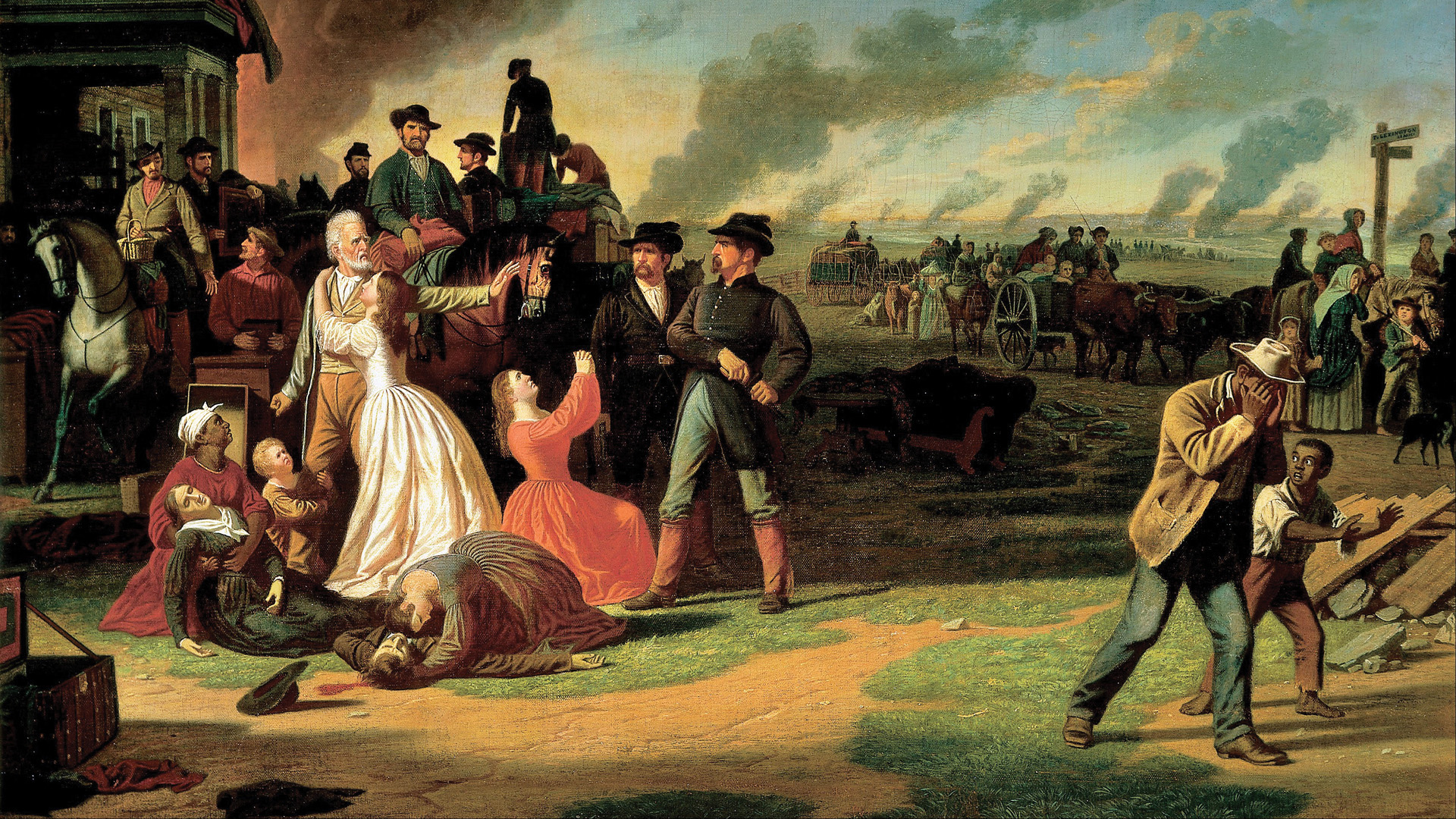
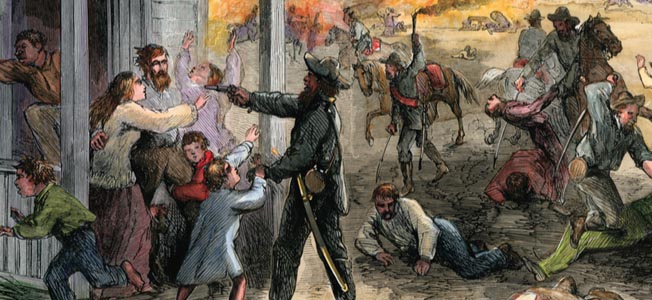
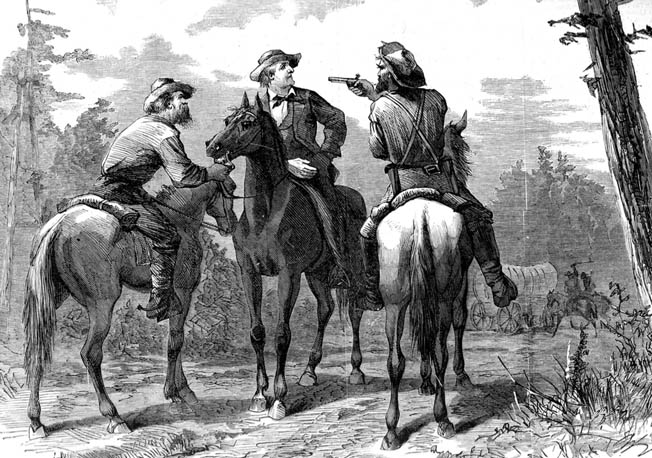
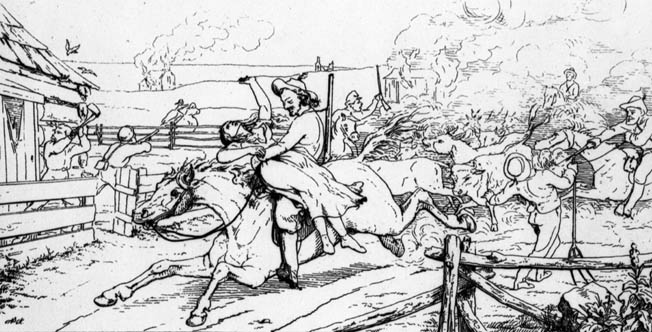
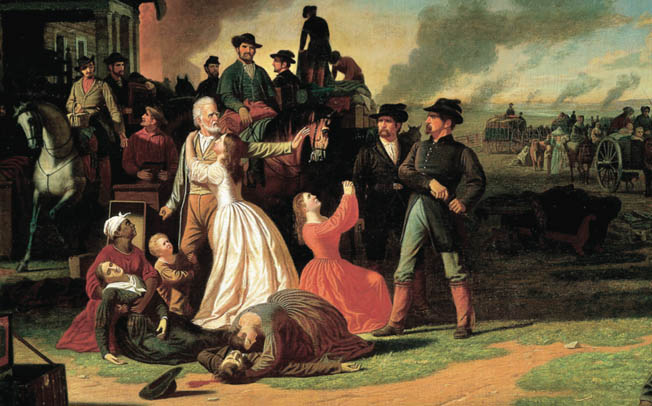
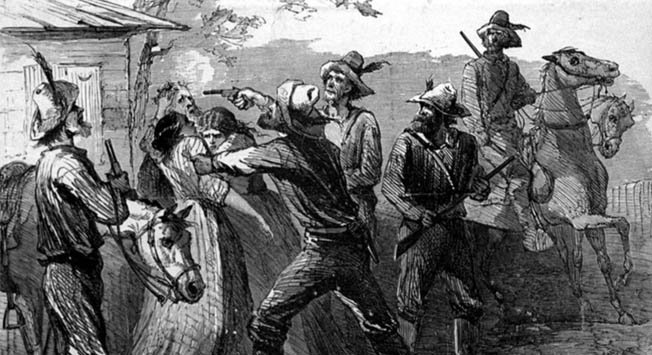
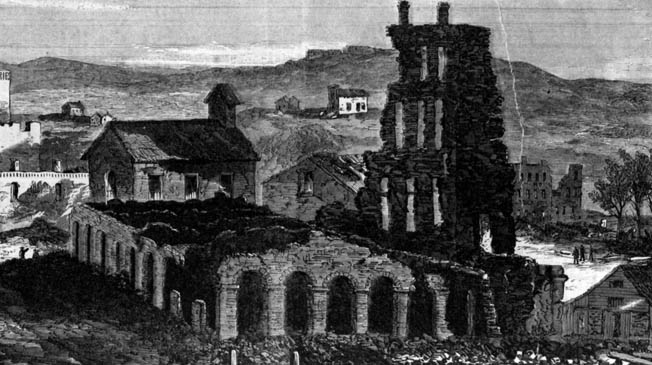
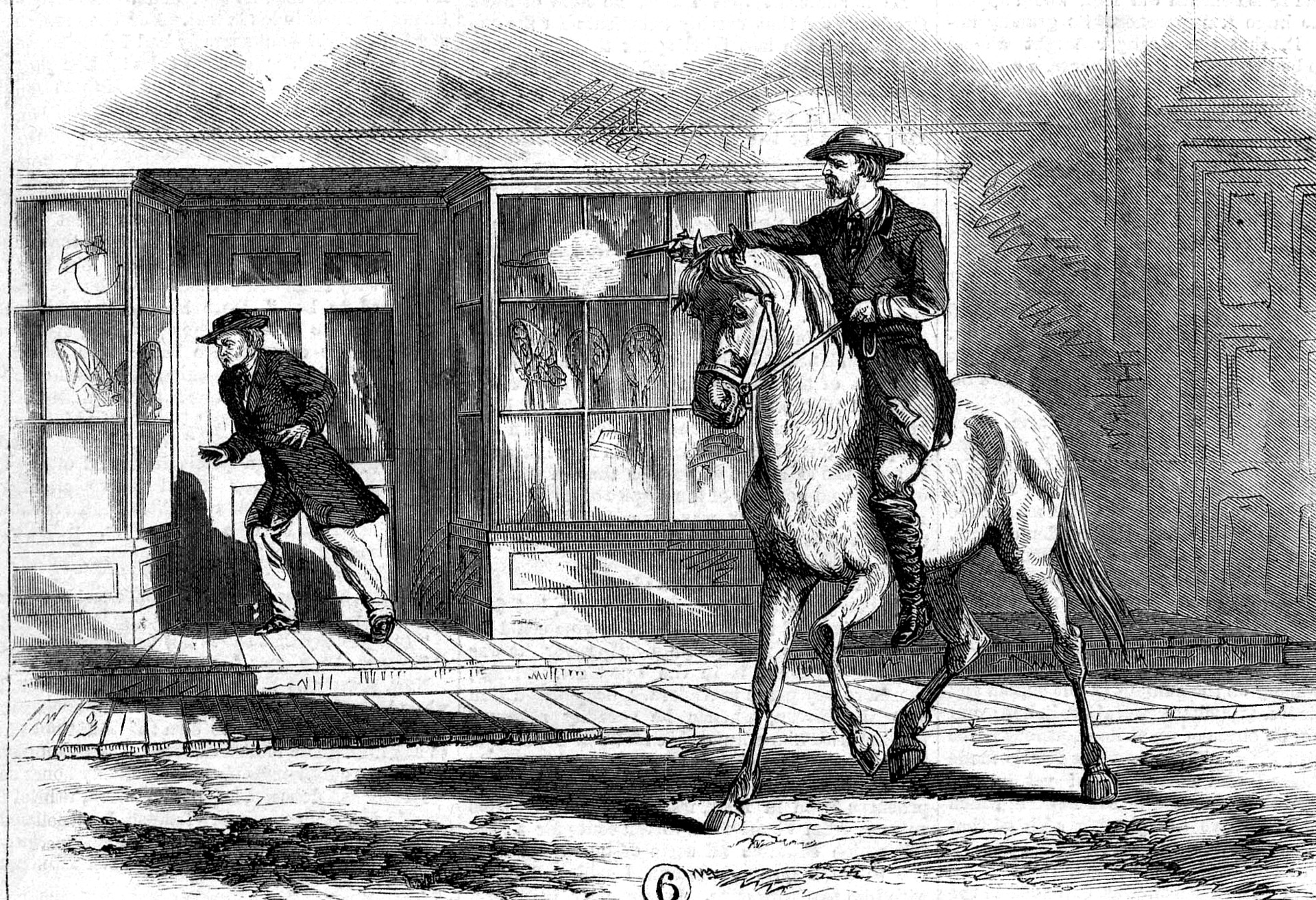
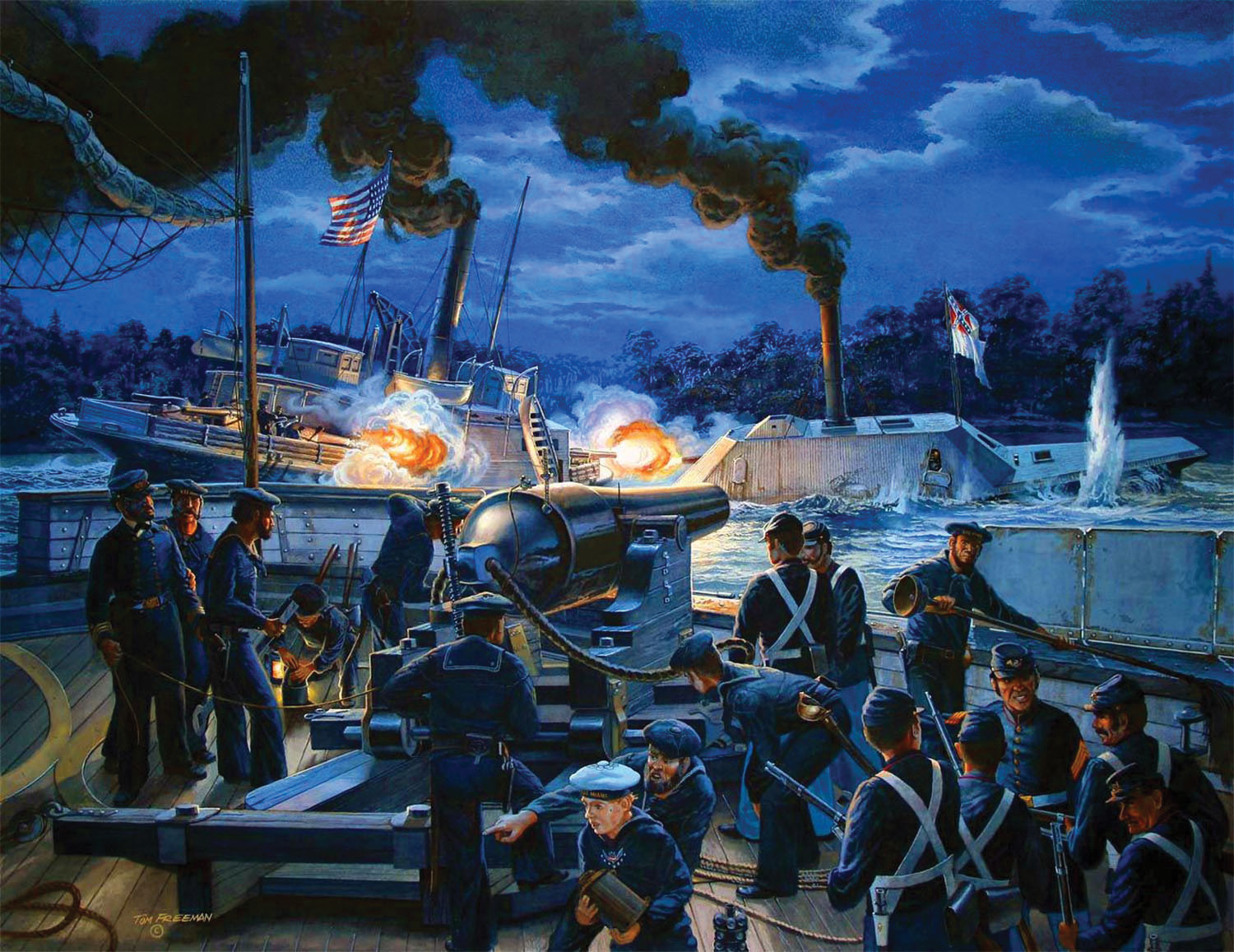
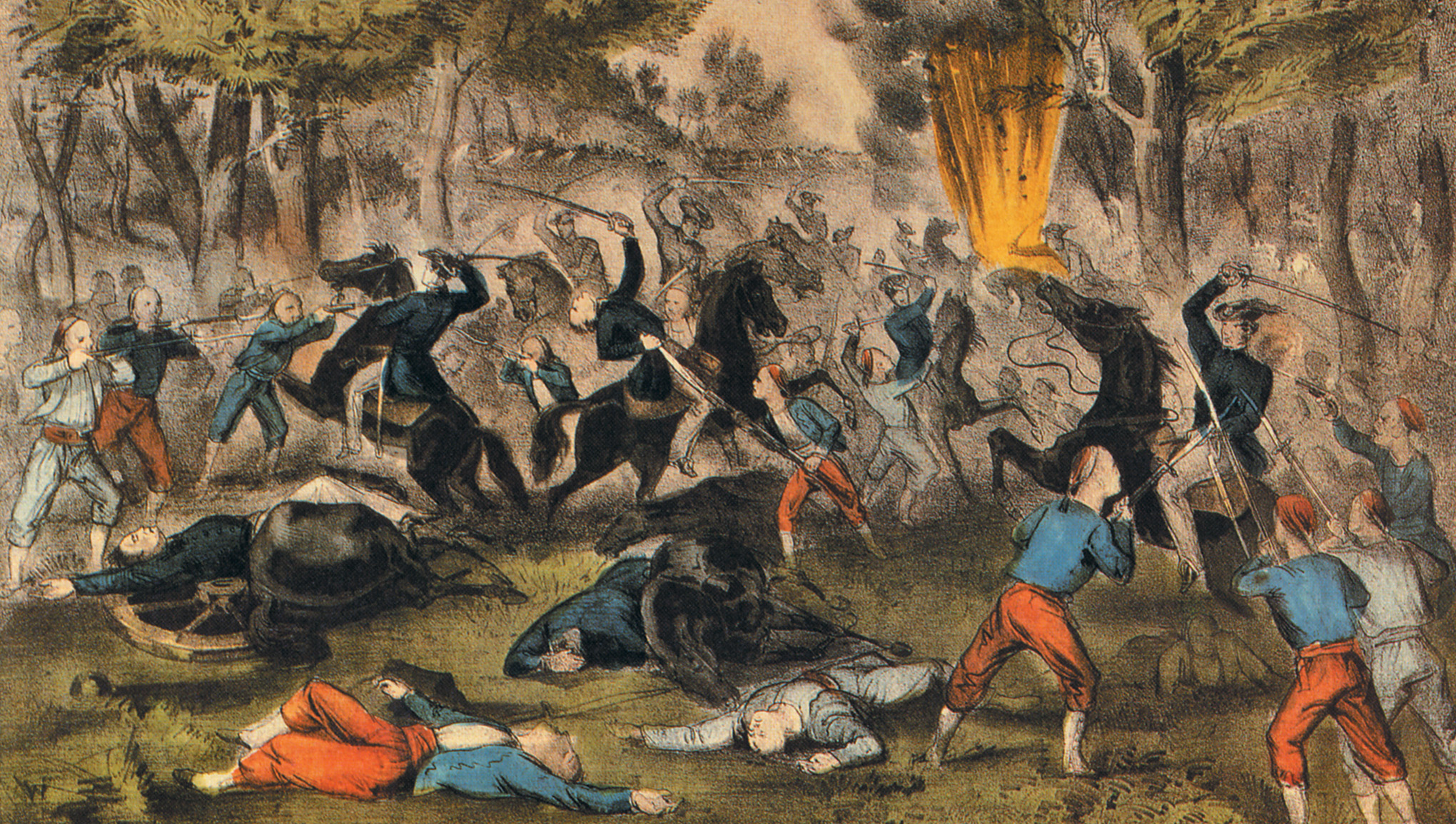
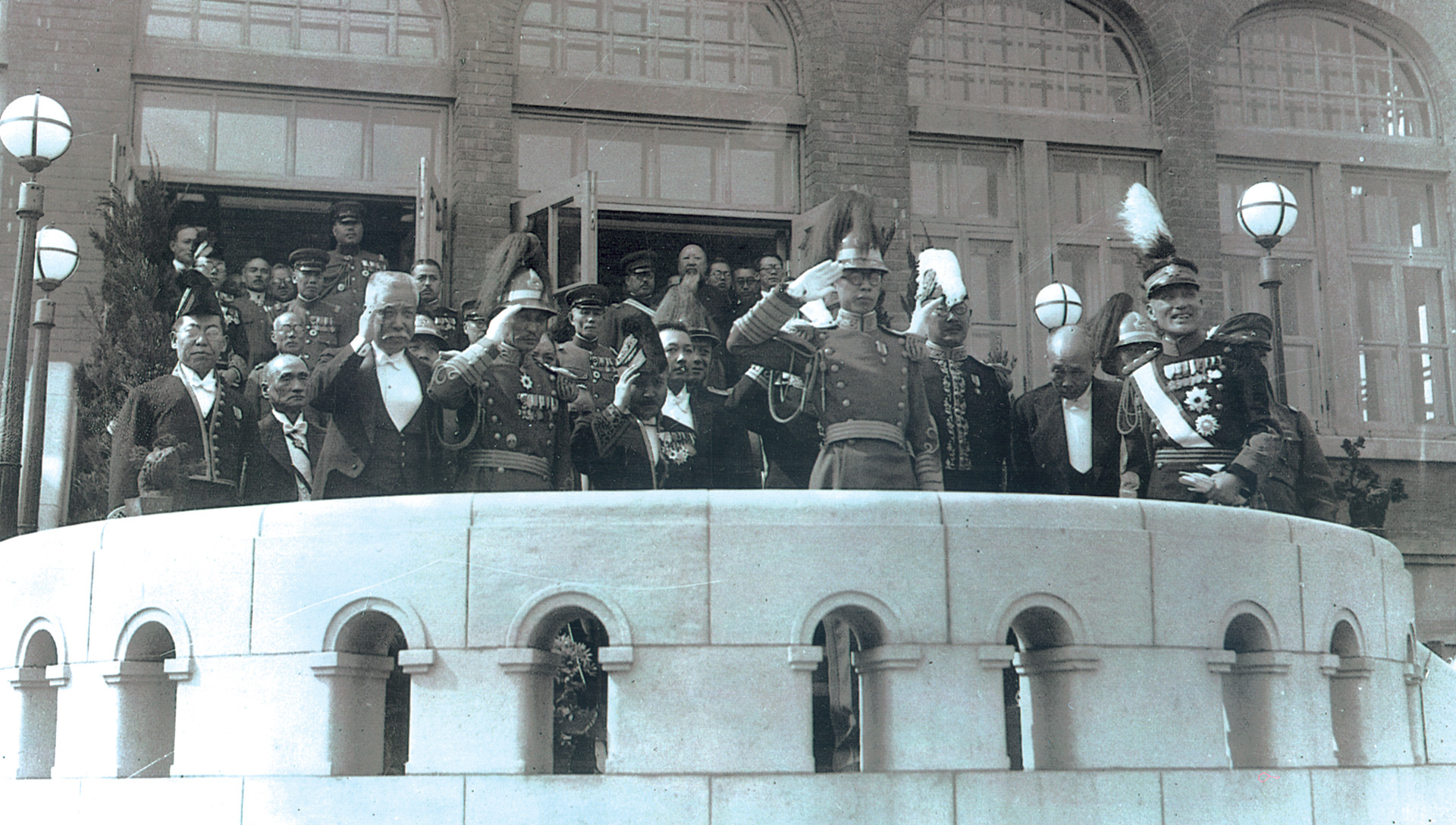
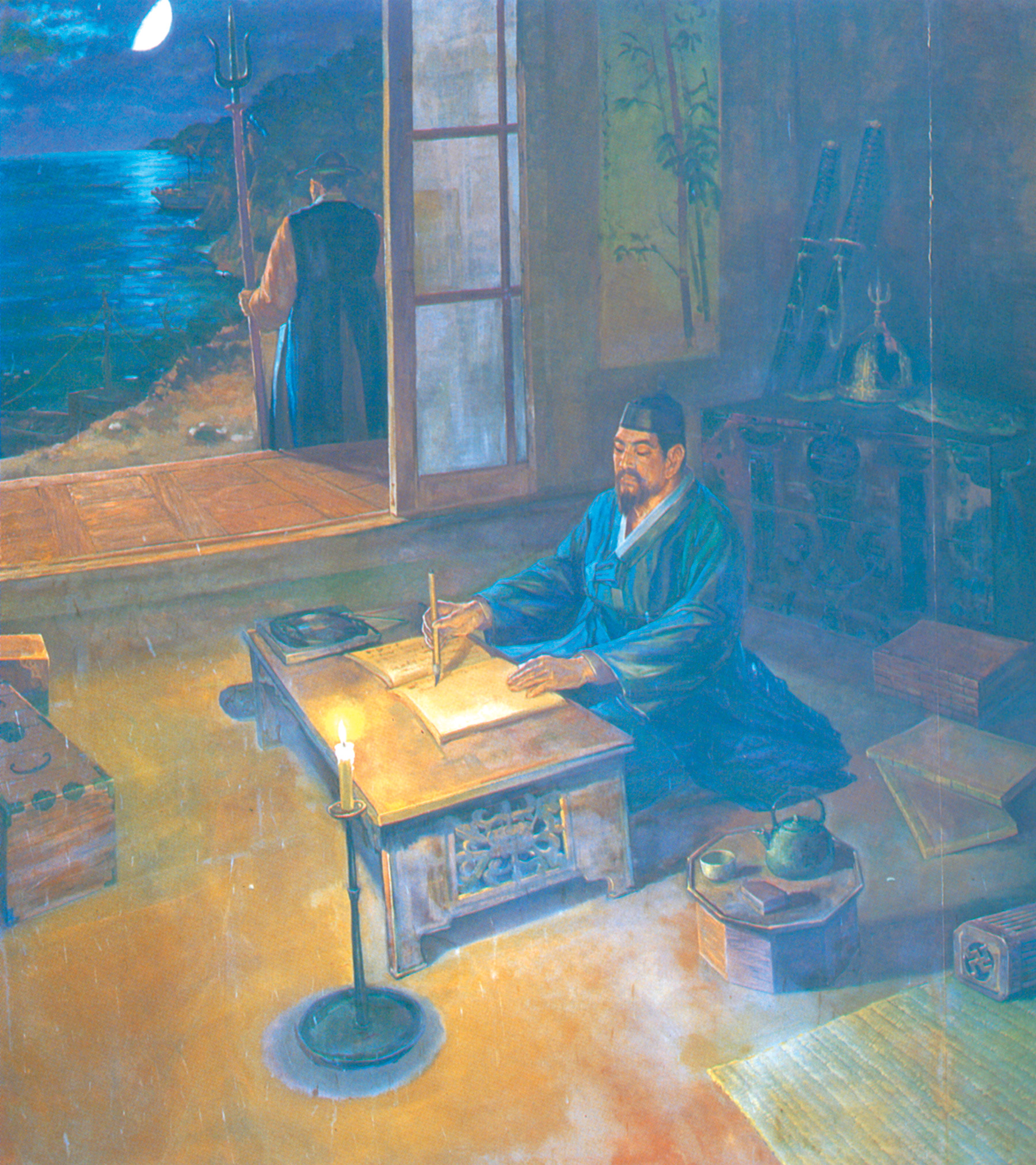
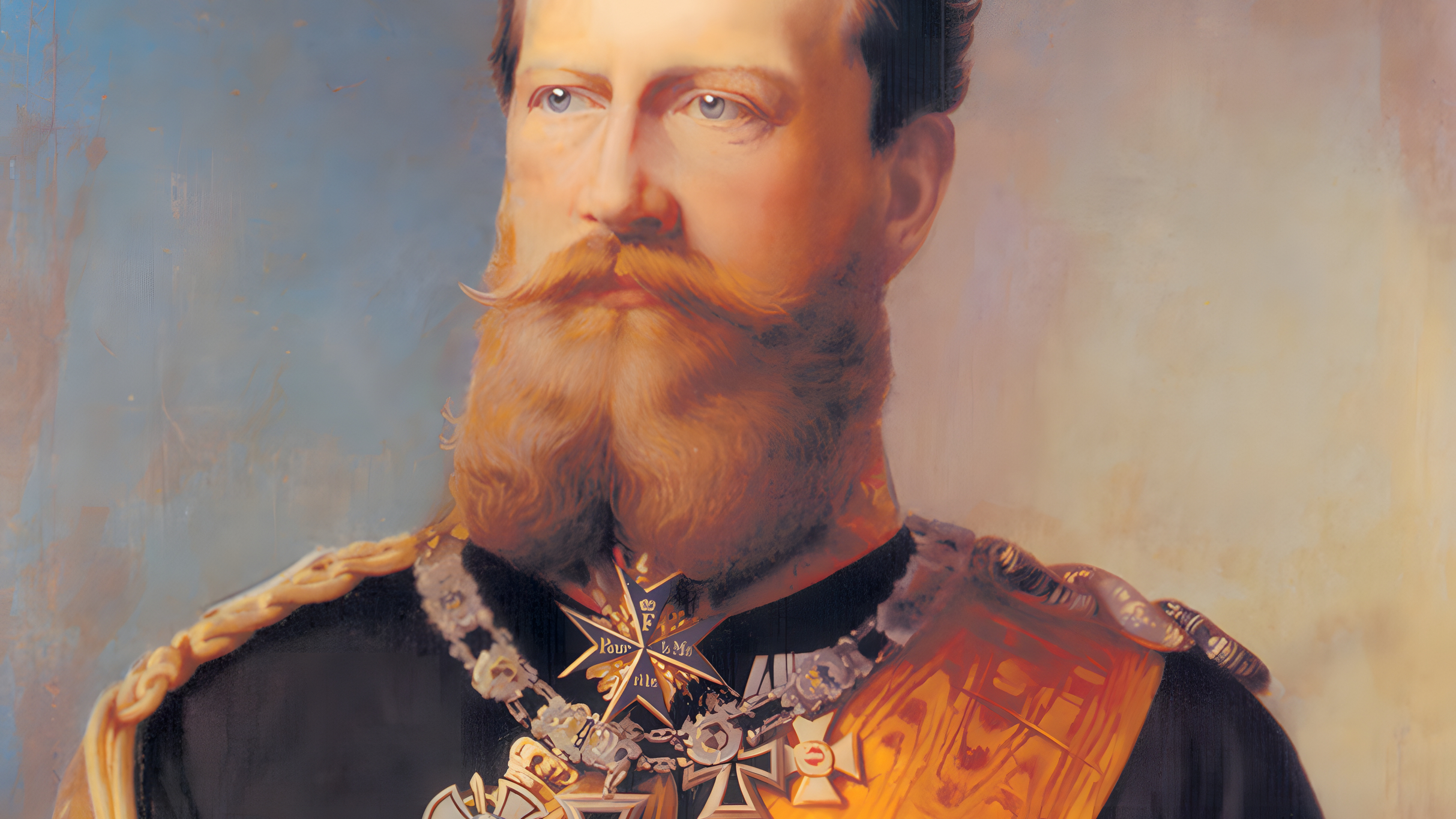
I don’t seem to find all of the story here, about what motivated Quantrill initially, which would help to explain his great hate. I have read that Quantrill and his brother driving cattle, were attacked by Jayhawkers that killed his brother and left Quantrill for dead as they stole his cattle. For two-days Quantrill laid wounded by his brother, keeping the coyotes and buzzards away before an old Indian came by, and buried his brother, and took Quantrill back to his Wigwam, to tend to his wounds and heal him.
Quantrill wanted vengeance for his brother and himself, and since they thought they had killed him hid who he was changed his name and joined up with the Jayhawkers riding on their raids and getting to know who each of them were. Soon Jayhawkers started turning up dead, one by one as every week another one would die, all with a bullet right in the middle of their forehead. I have read up to at least 23 of them getting killed out of the 30 men that had attacked them.
I had relatives that rode with Quantrill, and the confederates and have lived in the middle of all of their activity for the last 71 years. I had relatives that had to move out, and farms lost. Interesting also was Harry Truman’s mother, hated the Jayhawkers, for they had terrorized their farm in Grandview, and one of them on a horse, jumping over her, hit her with a hoof! Truman often had to calm her down, when she would get to going on about how terrible it really was. The Trumans were Pro union, but that didn’t matter to the raiders, for Lincoln had already campaigned and told them they were free to take whatever they wanted. The Civil war in Missouri, started in 1855, through the little war, and on for another 20 years, with outlaws ruling the countryside. The atrocities committed on both sides, guaranteed, everyone had someone to hate!
Although a number of questions remain regarding the details of some of the events of the Kansas and Missouri parts of the war, this is about the best accounting of the most significant parts that I have seen. Without question, in this type of action/re-action there are almost none who can stand with the angels. Civil war tends to bring up all manner of pent up grievances and there is little honor to go around. The actions in the Eastern part of the war seem almost gentlemanly by contrast.